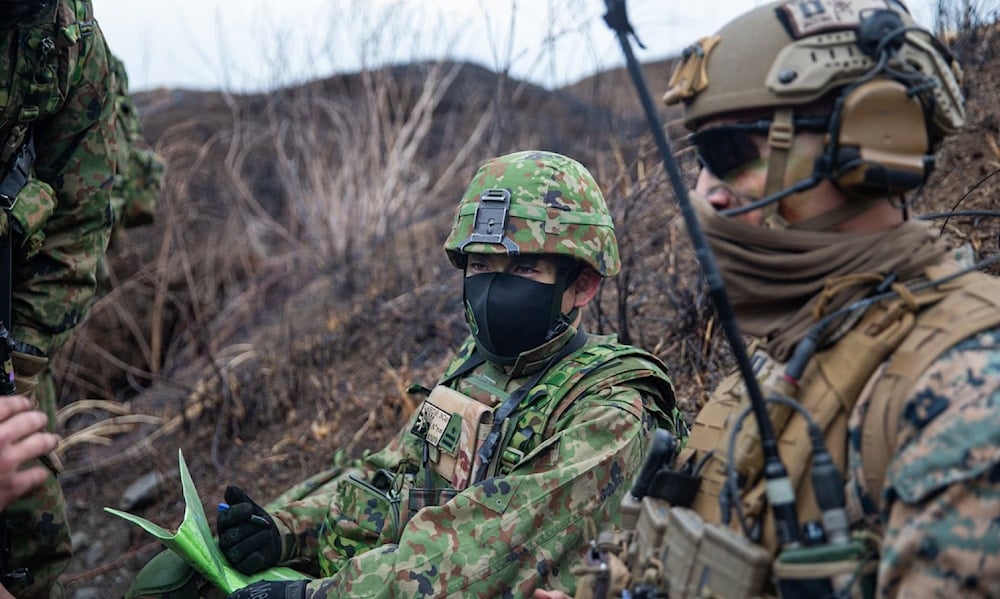Japan, Australia, US boost Pacific militarization with joint drills
In a joint statement, the three nations expressed serious concerns over what they claim to be destabilizing actions by China in the East and South China Seas.
-

A company commander with the Amphibious Rapid Deployment Brigade (ARDB), communicates through a translator during an air assault training exercise, on Combined Arms Training Center (CATC) Camp Fuji, Japan, March 9, 2022. (PACOM.MIL)
Japan will deploy soldiers to northern Australia for regular training with Australian and American forces, a significant step in their coordination of military efforts as the region witnesses increased militarization.
The announcement was made on Sunday by Australia's Defense Minister Richard Marles after a meeting with Japanese Defense Minister Gen Nakatani and US Defense Secretary Lloyd Austin in Darwin, the capital of Australia's Northern Territory.
Marles revealed that Japan's Amphibious Rapid Deployment Brigade will train alongside the Australian Defense Force and US Marines currently stationed in Darwin.
"We have spoken to Japan about having their Amphibious Rapid Deployment Brigade doing training with our own defense force and the US Marines," Marles said, noting that further details would follow. Japanese troops are expected to join the exercises starting next year.
The announcement coincided with the establishment of "Trilateral Defence Consultations," a new framework to enhance coordination among the Japan Self-Defense Forces, Australian Defense Force, and US forces.
This initiative is intended to align policies and operations across peacetime and contingency scenarios.
Concerns over regional stability
In a joint statement, the three nations expressed serious concerns over what they claim to be destabilizing actions by China in the East and South China Seas.
They cited incidents involving China's "dangerous conduct" toward Philippine and other coastal state vessels, reiterating their strong opposition to any unilateral attempts to change the status quo through force or coercion.
The Philippines is contesting China's extensive "Nine-Dash Line" claims. Moreover, the Philippines has strengthened military ties with the US and other allies, conducting joint exercises and providing increased access to its military bases.
For instance, in May 2024, US and Philippine forces, supported by an Australian surveillance aircraft, conducted large-scale drills near the disputed South China Sea, including sinking a mock enemy ship. China viewed these activities as efforts to contain its influence, interpreting them as provocative actions.
Read more: Philippines to 'stand our ground' in South China Sea dispute
China has viewed these joint military drills as provocative actions aimed at containing its influence in the region. Recently, it has intensified its military activities in the South China Sea, conducting a series of drills that have heightened regional tensions.
Notably, China has expanded its coast guard fleet, deploying the world's longest patrol ships, such as the Haijing 5901 and Haijing 2901, to enforce its territorial claims in disputed waters. The Wall Street Journal reported on November 4 that these vessels have been involved in confrontational actions, including ramming rival ships.

 3 Min Read
3 Min Read










